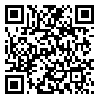دوره 9، شماره 2 - ( 1-1402 )
جلد 9 شماره 2 صفحات 122-113 |
برگشت به فهرست نسخه ها
Download citation:
BibTeX | RIS | EndNote | Medlars | ProCite | Reference Manager | RefWorks
Send citation to:



BibTeX | RIS | EndNote | Medlars | ProCite | Reference Manager | RefWorks
Send citation to:
Salehi T, Mirzaee M, Haghani S, Salehinia N. Assessment of the Relationship Between Intention to Migrate With Workload and a Healthy Work Environment of Nurses. JCCNC 2023; 9 (2) :113-122
URL: http://jccnc.iums.ac.ir/article-1-426-fa.html
URL: http://jccnc.iums.ac.ir/article-1-426-fa.html
Assessment of the Relationship Between Intention to Migrate With Workload and a Healthy Work Environment of Nurses. نشریه مراقبت پرستاری مددجو محور. 1402; 9 (2) :113-122
چکیده: (1912 مشاهده)
Background: Like other countries in the world, Iran is facing the problem of a shortage of nurses. Meanwhile, many Iranian nurses migrate to other countries every year. The present study aims to assess the relationships between migration intention, workload, and a healthy work environment for nurses.
Methods: This cross-sectional correlational study was conducted in 2020 using a proportional stratified sampling of 360 nurses working in the Iran University of Medical Sciences (IUMS) teaching hospitals. The study data were collected through a demographic questionnaire, the nurses’ intention to migrate questionnaire, the NASA task load index, and the American Association of Critical-Care Nurses Healthy Work Environment Assessment. In this study, we used the independent t-test, analysis of variance, and the Pearson correlation coefficient for data analysis at a significance level of <0.05 in SPSS software, version 16.
Results: The Mean±SD intention to migrate score was 65.59±33.51. A weak but significant positive correlation existed between the intention to migrate and workload (r=0.166, P=0.002). There was an inverse and weak relationship between the intention to migrate and a healthy work environment (r=-0.160, P=0.002). There was also a significant relationship between the intention of nurses to migrate and their work experience (P=0.048) and employment status (P=0.001).
Conclusion: The prevention of nurses’ migration must be investigated thoroughly to determine the reasons. But according to the results of this study, providing a healthy work environment and maintaining the current workforce by providing the indicators desired by nurses may partly prevent excessive migration of nurses.
Methods: This cross-sectional correlational study was conducted in 2020 using a proportional stratified sampling of 360 nurses working in the Iran University of Medical Sciences (IUMS) teaching hospitals. The study data were collected through a demographic questionnaire, the nurses’ intention to migrate questionnaire, the NASA task load index, and the American Association of Critical-Care Nurses Healthy Work Environment Assessment. In this study, we used the independent t-test, analysis of variance, and the Pearson correlation coefficient for data analysis at a significance level of <0.05 in SPSS software, version 16.
Results: The Mean±SD intention to migrate score was 65.59±33.51. A weak but significant positive correlation existed between the intention to migrate and workload (r=0.166, P=0.002). There was an inverse and weak relationship between the intention to migrate and a healthy work environment (r=-0.160, P=0.002). There was also a significant relationship between the intention of nurses to migrate and their work experience (P=0.048) and employment status (P=0.001).
Conclusion: The prevention of nurses’ migration must be investigated thoroughly to determine the reasons. But according to the results of this study, providing a healthy work environment and maintaining the current workforce by providing the indicators desired by nurses may partly prevent excessive migration of nurses.
| بازنشر اطلاعات | |
 |
این مقاله تحت شرایط Creative Commons Attribution-NonCommercial 4.0 International License قابل بازنشر است. |





